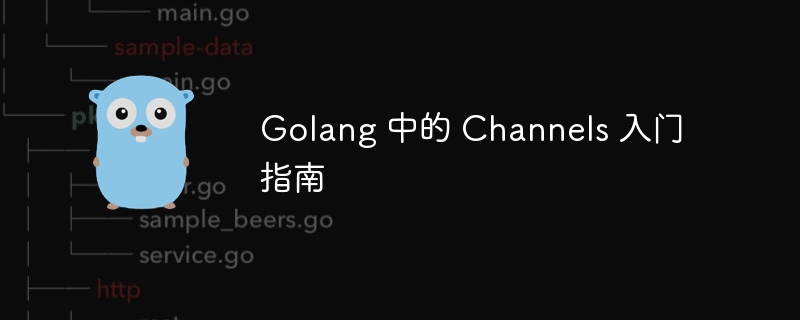

Channels in Golang Getting Started Guide
Golang (or Go language) is a programming language developed by Google, and its concurrent programming model is its most important One of the characteristics. One of the most important concepts is channels. Channels are tools used to communicate and synchronize between different concurrent goroutines.
This article will introduce the concept, operation and use of channels in Golang, helping readers get started and grasp the importance of channels in concurrent programming.
1. Basic concept of channel
Channel is a special data type used for synchronization and communication between different goroutines. Channels are typed, which means they can only pass data of a specific type. A channel has a send operation and a receive operation, which are used to send and receive data in the channel respectively.
In code, you create a channel by using the keyword chan and you can specify the type of elements in the channel. For example: ch := make(chan int) creates a channel for passing data of type int.
2. Channel operation
<- operator to send data to the channel. For example, ch <- 5 sends the integer 5 to channel ch. <- operator to receive data from the channel. For example, x := <- ch will receive an integer from channel ch and assign it to variable x. close() function to close a channel. The closed channel can no longer receive data, but existing data can continue to be read from it. x, ok := <- ch will read an integer from channel ch and store the result in the variable x. If the channel is closed, the value of variable ok will be false. 3. Use channels for concurrent operations
The following is a sample code to illustrate how to use channels for concurrent operations.
package main
import (
"fmt"
)
func sum(s []int, ch chan int) {
sum := 0
for _, v := range s {
sum += v
}
ch <- sum
}
func main() {
numbers := []int{1, 2, 3, 4, 5}
ch := make(chan int)
go sum(numbers[:len(numbers)/2], ch)
go sum(numbers[len(numbers)/2:], ch)
x, y := <-ch, <-ch
total := x + y
fmt.Println("Total:", total)
}
The above code defines a sum() function that calculates the sum of all integers in a given slice. In the main() function, we create a slice containing a set of integers. Then, we create a channel of type integer.
In two concurrent goroutines, we calculate the sum of the two parts of the slice by calling the sum() function and send the result to the channel. Finally, we receive the results from the channel using the <-ch syntax and calculate the sum.
Through concurrent calculation, we can speed up the summation. This is because two goroutines can perform computations simultaneously without waiting for the previous goroutine to complete.
4. Summary
Channels are an important tool for concurrent programming in Golang. They provide a simple way to demonstrate communication and synchronization between different goroutines. In concurrent programming, using channels can improve the performance and reliability of concurrent programs.
This article introduces the basic concepts, operations and usage of channels, and demonstrates how to use channels for concurrent operations through a sample code. I hope readers can easily get started with channels in Golang through the introduction and sample code of this article.
The above is the detailed content of Getting started with Channels in Golang. For more information, please follow other related articles on the PHP Chinese website!
 How to define variables in golang
How to define variables in golang
 What are the data conversion methods in golang?
What are the data conversion methods in golang?
 What are the commonly used libraries in golang?
What are the commonly used libraries in golang?
 What is the difference between golang and python
What is the difference between golang and python
 bios cannot detect solid state drive
bios cannot detect solid state drive
 How to intercept harassing calls
How to intercept harassing calls
 What are the java workflow engines?
What are the java workflow engines?
 What types of css selectors are there?
What types of css selectors are there?
 Usage of ppf function in Python
Usage of ppf function in Python




